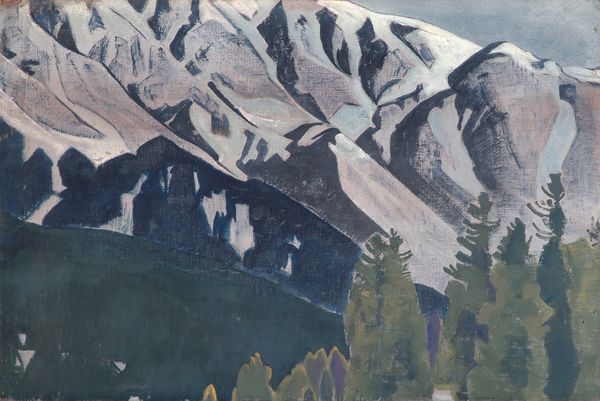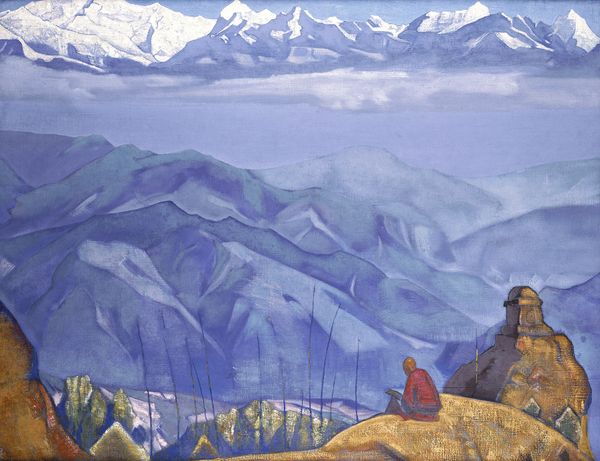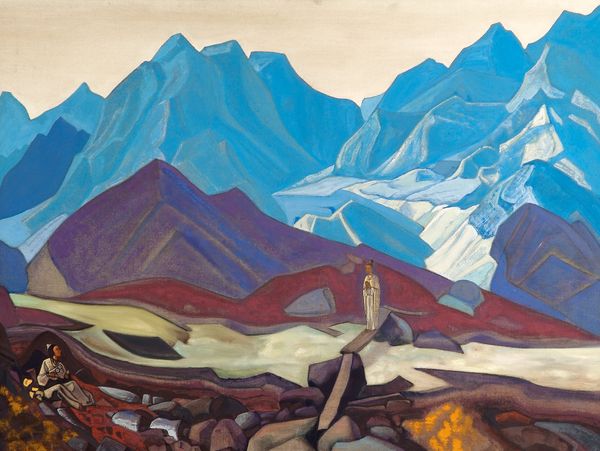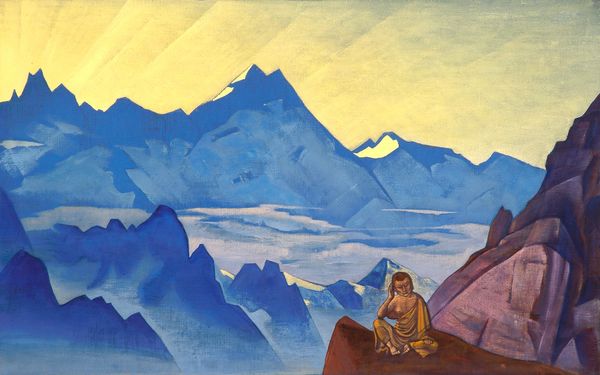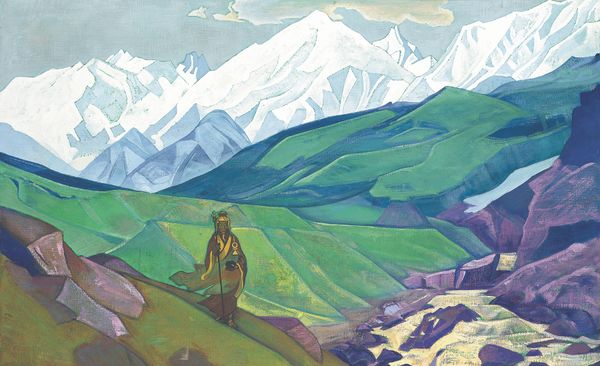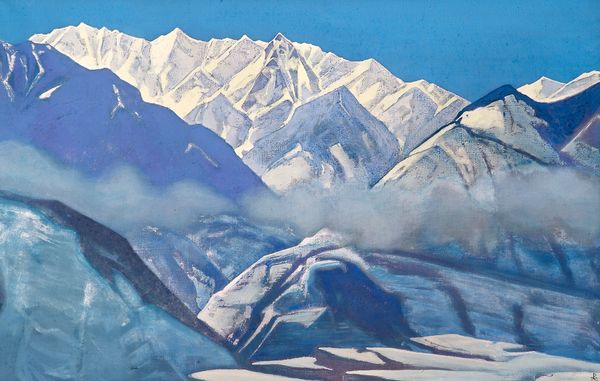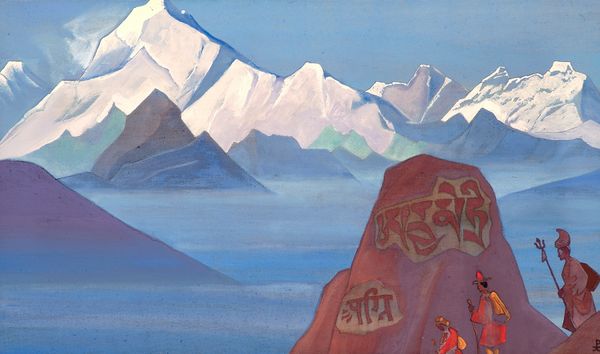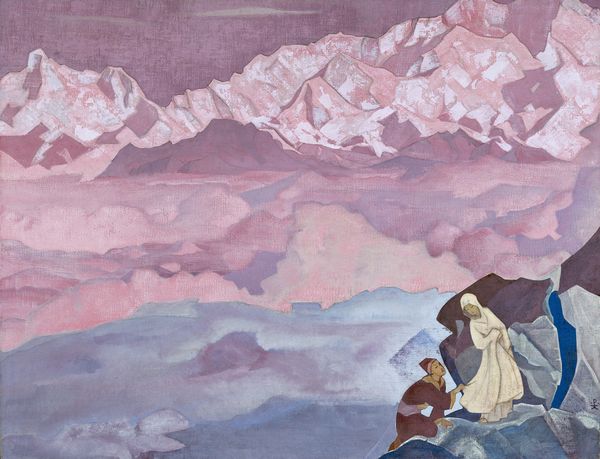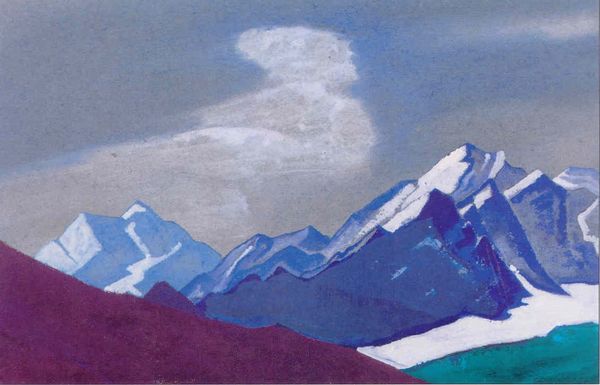
Dimensions: 74 x 118 cm
Copyright: Public domain
Curator: Nicholas Roerich, painted "Krishna (Spring in Kulu)" in 1930. It's currently housed at the Nicholas Roerich Museum in New York City. Editor: The texture of the oil paint makes those mountains feel massive and imposing. There's a striking contrast between the cool blues of the landscape and the warmth radiating from the figure beneath the tree. Curator: Absolutely. Roerich was deeply influenced by Theosophy. This work fits neatly within the context of the Roerich Pact, a historical attempt championed by Roerich himself, to globally protect cultural objects during times of conflict. Doesn't Krishna embody the kind of serene, transcendent wisdom such a pact seeks to safeguard? Editor: I’m struck by how the medium and method give a stylized look to a pastoral scene. Oil-paint rendering makes the mountains abstract. I can almost feel the weight of the labor. He's not just depicting a landscape; he's using materials in such a way that conveys something almost elemental about laboring within a place. Curator: The painting is deeply rooted in romanticism, echoing broader turn-of-the-century artistic movements towards spiritualism, particularly his own spiritual-artistic movement. It showcases a very clear aesthetic preference. Editor: Yes, you can see a direct line through to current debates about access to land. Here, it is represented through his choices of the land and how he makes those pigment selections and the application—all things made to depict nature. Curator: I agree, and it also brings the public sphere to light by portraying an appreciation of what matters culturally. The work can speak for Roerich and his political aims as a Russian immigrant traveling through Asia. Editor: Seeing the piece this way illuminates how access, especially through making art about Krishna here, functions for Roerich in his cultural, economic, and environmental setting. The production values point toward the historical nature of romantic landscape painting through a particular kind of artist, the making, its purpose, and its display to others. Curator: The work becomes more layered once you realize its political-historical connections to Roerich's personal pursuits, as a visionary figure. Editor: It all comes down to understanding how art comes into being, how it is constructed and meant to work within a historical culture.
Comments
No comments
Be the first to comment and join the conversation on the ultimate creative platform.
